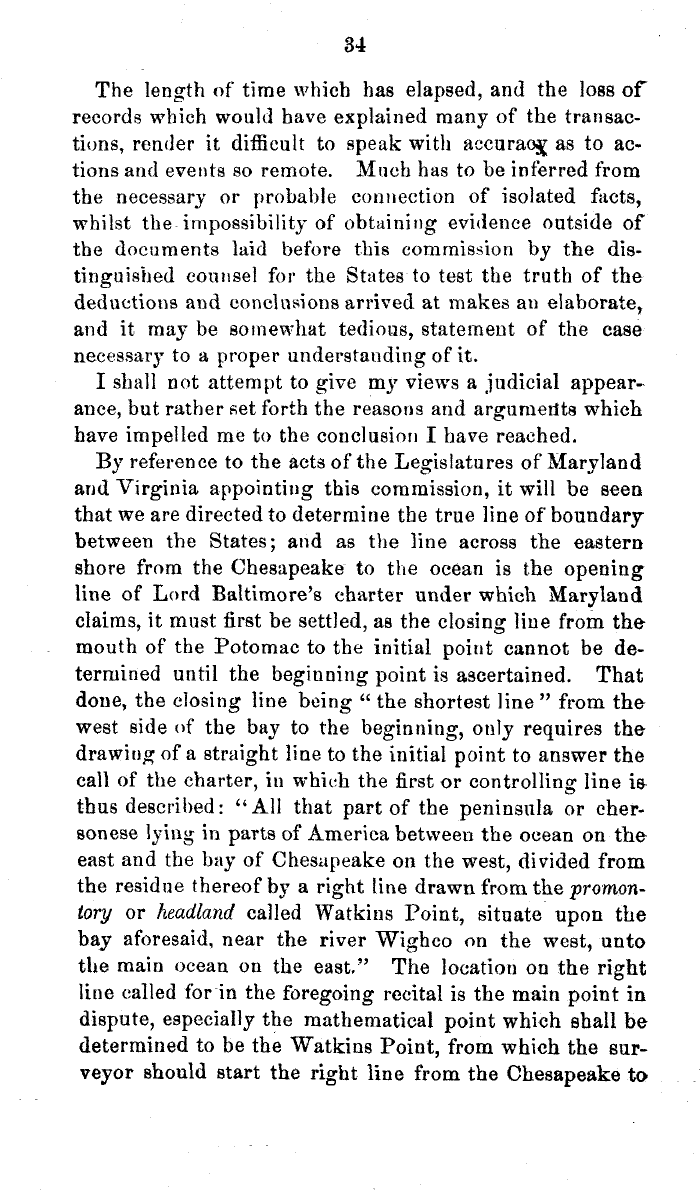| 35
the ocean. In reference to " Watkins Point" several
things must be observed: First. It is described in the
opening line as a promontory or headland, and in the
closing line thus: 11 Thence by the shortest line unto the
said -promontory or place called ' Watkins Point.' " In
Webster's Unabridged Dictionary a 11 promontory" is thus
described: "From pro, before, and mons, mountain.
(Geog.) A high point of land or rock projecting unto the
sea beyond the line of the coast; a headland. It dif-
fers from a cape in denoting high land. A cape may be a
similar projection of land, high or low. ° Like one who
stands upon a promontory."' (Shak.) Second. It is situated
on Chesapeake bay. Third. It was near (not upon or
necessarily connected with) the river Wigbco. Fourth.
The line to be run from Watkins Point on Chesapeake bay
was to be a " right " or straight line °` from that initial
to the ocean on the east."
When the charter for Maryland was granted by Charles
I to Cecelius, Lord Baltimore, in 1632, there was no map
of the country in existence, except that made by Captain
John Smith to accompany the history of his explorations
and adventures in America, and no means existed of de-
termining the location and character of the place called by
him - Watkins Point," except the description given of it
in his history. The name 11 Watkins Point" is written
on the land in Smith's map in such a manner that no per-
son can say, by looking at it with the certainty that ought
to be required in settling a question of boundary between
colonies or States, what spot. is intended to be indicated as
the mathematical point from which a line of survey should
be run. The history which the map was drawn to illus-
trate makes it conclusive that the marshy angle at Cedar
straits could not be the " Watkins Point " named by Cap-
tain Smith, the only description of which is given by him
in volume 1, page 183, as follows
11 Watkins', Read's, and Momford's poynts are on each
side Limbo, Ward, Cantrell, and Sicklemore's, betwixt
Patawomack and Pamunkee, after the names of the discov-
|

